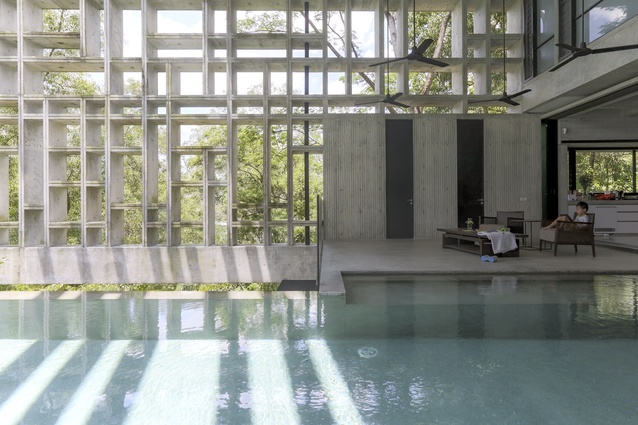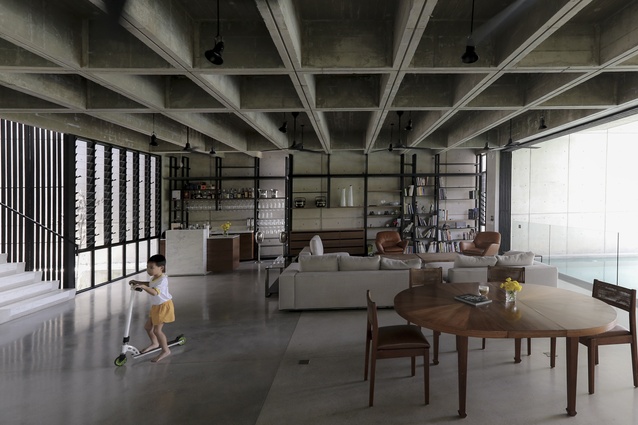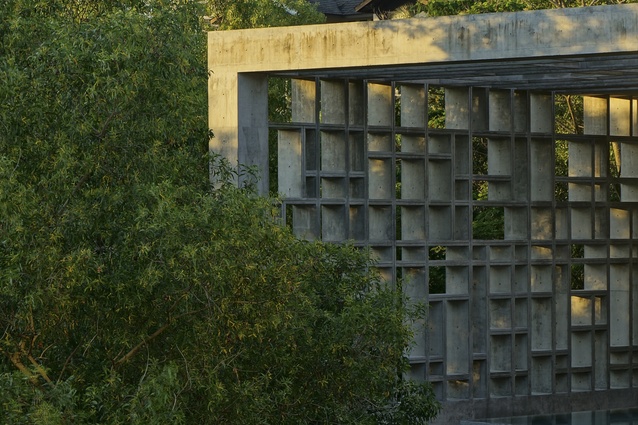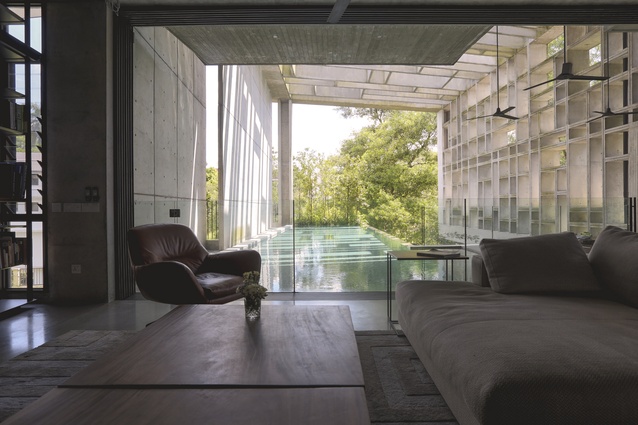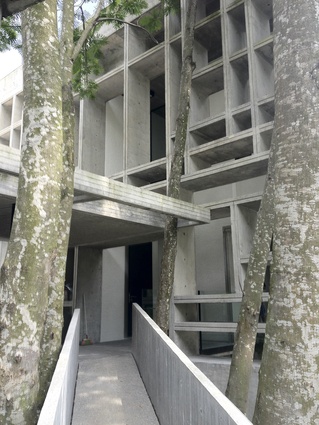Tropical Box House
Architecture is the learned game, correct and magnificent, of forms assembled in the light,” said Le Corbusier, who was renowned for his many béton brut (raw concrete) structures. The master would have approved of the Tropical Box House in Kuala Lumpur by WHBC Architects who have crafted a concrete monolith that floats daringly in the lush jungle, and whose light-filled interiors carve form out of light.
Lightness is not a property usually associated with concrete, but this 700m2 home appears to hover within the tree canopy. The choice to suspend it there came intuitively to the architects. “The terrain of the land made the decision for us to touch the ground as lightly as possible… the most careful way to build without disrupting the natural terrain is to place the house lightly on stilts,” says Malaysian architect BC Ang.
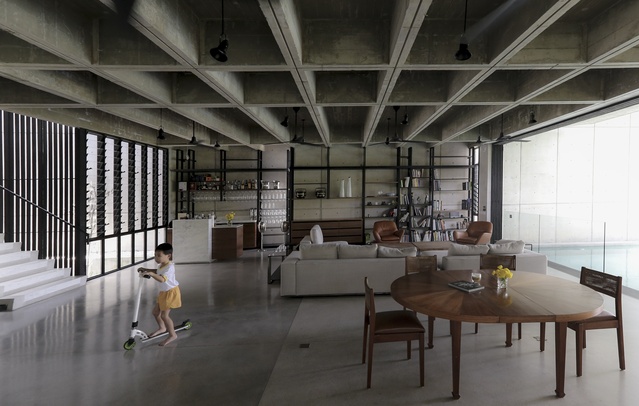
Sitting in the lounge, overlooking the spectacular pool floating in a hangar-sized, latticed-concrete envelope, you could be forgiven for thinking you were inside a villain’s lair, lost in a vast jungle. The house, however, is located on a sheer section in Damansara Heights, an upmarket suburb of Kuala Lumpur, surrounded by substantial private houses and condominiums. The raw concrete walls and screens focus the view towards the natural jungle enclave, simultaneously balancing the client’s need for privacy with a desire to connect with the lush landscape.
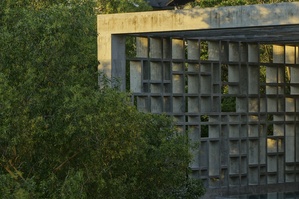
For a structure of such uncompromising materiality and form, it is remarkable that the interior feels light and soft. The choreographed cadence of the metre-deep concrete brise soleil structure produces a stunning dappled light on the interior, making the concrete appear luminous. “We wanted to simulate the conditions of sitting under or among the trees in the tropical climate, with good movement of air, dapples of light as the sun filters through the canopy, shaded, well ventilated and not too hot.”
The entrance to the house is via a concrete bridge on a 45-degree angle, threading through slender Albizia trees, on to a canopied landing. The entry level is sequenced to keep the working bones of the house back at the top of the hill, allowing for the big reveal when you step down into an open-plan living and dining area that merges seamlessly with the double-height covered deck and infinity pool. The end of the enclosure is left open to allow an uninterrupted framed view of the trees.
The top floor contains the master bedroom and ensuite that looks over the pool, as well as kids’ bedrooms with bathrooms. A stair courtyard void pulls light down to the basement floor where the service areas are located. All rooms visually invite nature in; BC Ang explains, “in the tropics we very much live in the spaces in between. External and internal boundaries are usually blurred.”
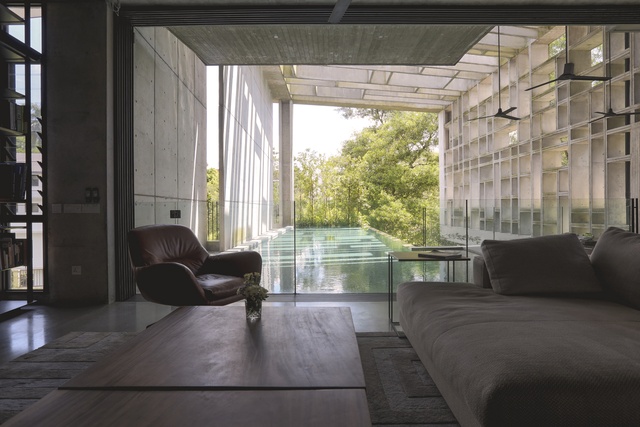
The Tropical Box is a direct response to the climate and is proof that pragmatism can be beautiful. Unlike many houses in more temperate zones that orientate themselves like deck chairs towards the sun, Malaysian houses must deal with its two humid seasons, wet and dry, in creative ways.
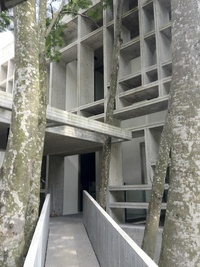
The architects have used the concrete lattice envelope for both playful light effects and as a response to climate. The porous envelope reduces direct sunlight while allowing cooling air to freely pass through to create, in the words of the architect, an “inward looking abode that safeguards its interior from the tropical sun.”
Concrete is a ubiquitous building material in Malaysia due its relative economy, but to work with concrete in tropical climates, architects must be smart about shading it. As BC Ang explains, “just as concrete absorbs heat, if shaded it also retainscoolness. So, if well-shaded, a concrete building is actually quite comfortable in the tropics.”
Simple forms often work best in nature; this is true for the Tropical Box with its raw concrete that exudes a calmness both brutal and beautiful, where the architecture becomes the backdrop for the play of light and life in the tree canopy.

